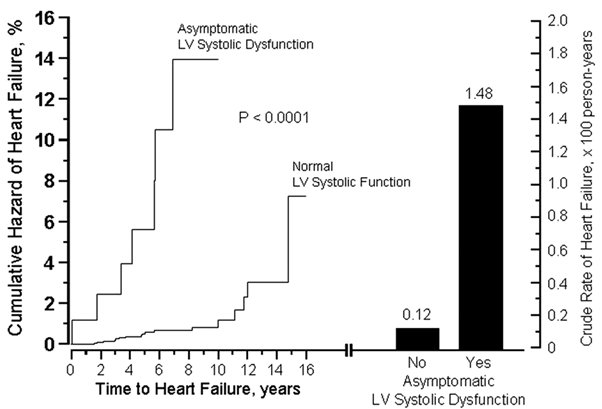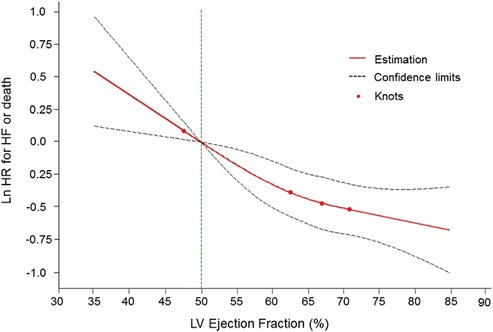These 2 IVC M-mode images were obtained from the same patient 10 seconds apart. How could they be so different?
1/
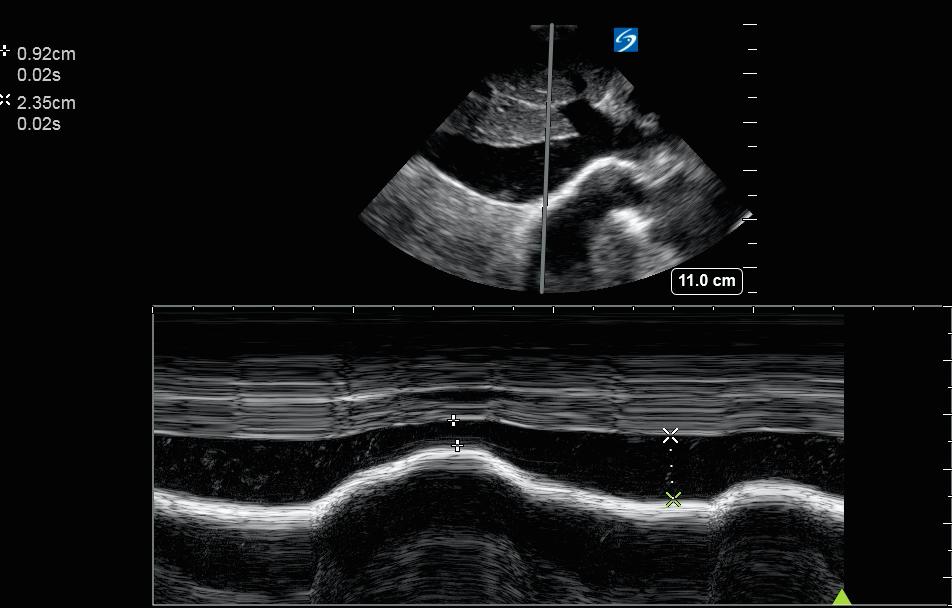
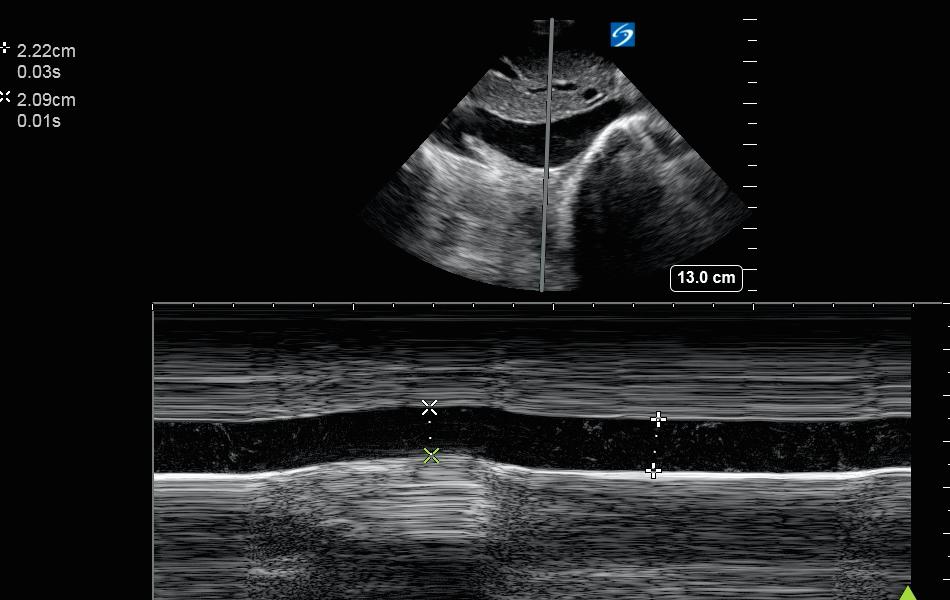
Measurement 1: 2.35-->0.92 (65% collapse)
Measurement 2: 2.22-->2.09 (5% collapse)
Why so different?
2/
A common method is subxyphoid long axis, B mode or M mode. See below
-photo from emedicine.medscape.com/article/104401…
-excerpt from WikiM (wikem.org/wiki/IVC_ultra…) for a nice description
-an annotated sample B mode image and M mode image
3/

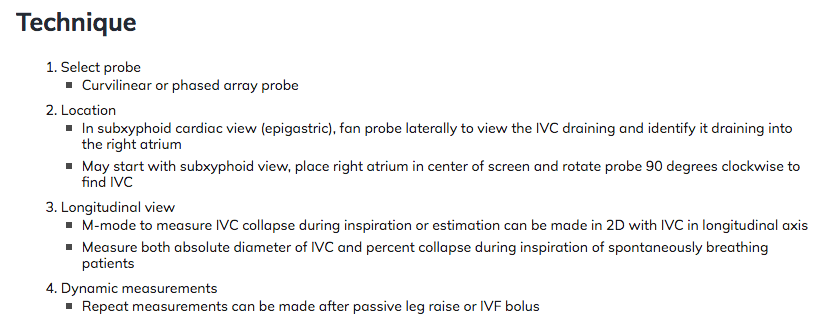
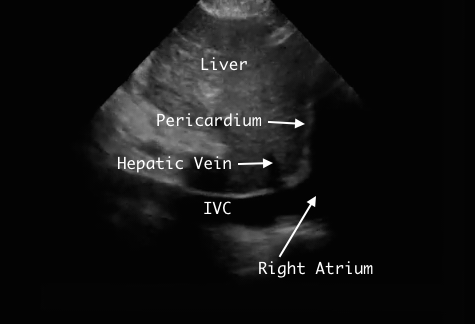
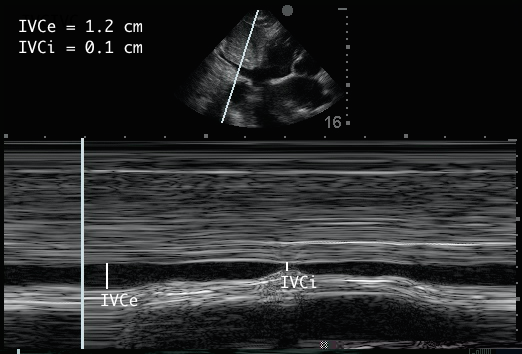
1) Craniocaudal insp movement
2) Mediolateral insp movement
3) Nonuniform insp collapse
4) Variability in location of measurement (M mode)
5) Variation in breathing pattern
Which of the above are present in our pt?
5/
6/
7/
8/
9/
-non-uniform collapse (from the left posterior)
-medio-lateral movement (slight)
-cranio-caudal movement (evidenced by sliding of the hepatic vein cross section toward the IVC)
These can also contribute to variation between measurements.
10/
11/
-Craniocaudal insp movement
-Mediolateral insp movement
-Nonuniform insp collapse
-Variability in location of measurement
12/
-Watch for craniocaudal movement in long axis
-Watch for mediolateral movement in transverse axis
-Many advise not using M-mode at all. If using M-mode, place cursor 2-3 cm below RA or 1 cm below hepatic vein
13/
Where can you view the IVC? options include:
1) Subxyphoid, Long axis
2) Subxyphoid, Transverse axis
3) Midaxillary Line (“rescue view”), long or transverse
18/
19/
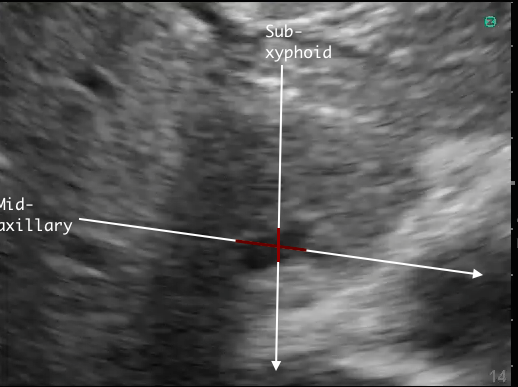
This study found reliability was higher at extremes of volume status, more operator experience (>5 IVC scans), and when a four-point visually estimated scale was used.
ncbi.nlm.nih.gov/pubmed/21414063 (openaccess)
20/
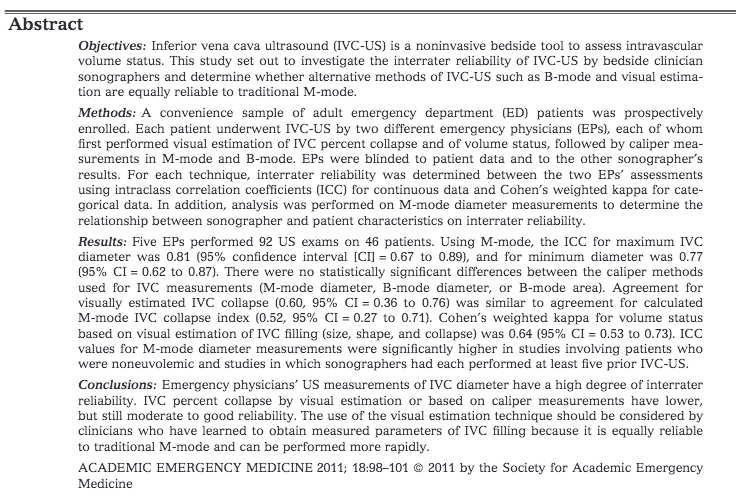

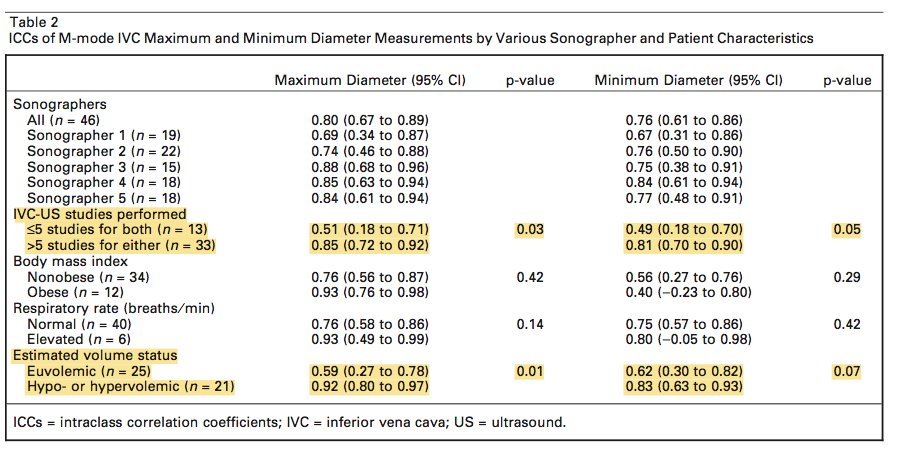
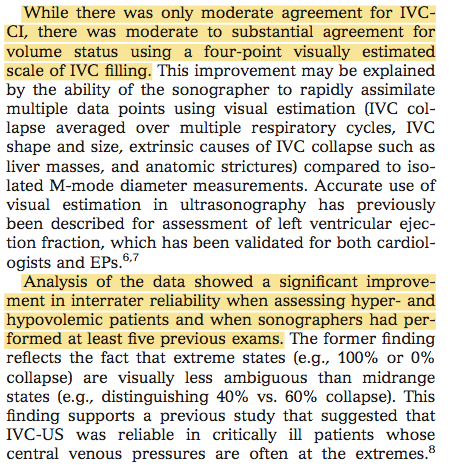
21/
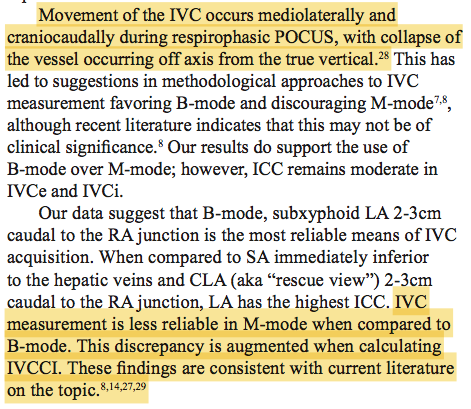
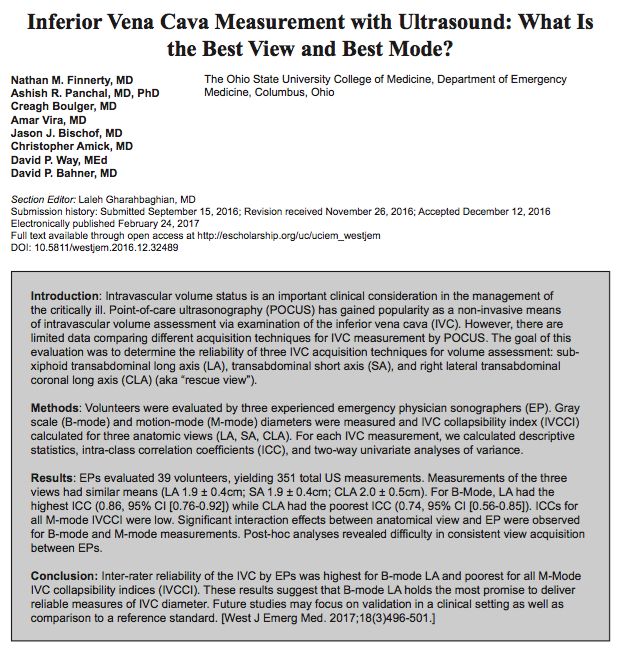

One M mode view reveals IVCe>2cm and IVCCI>50%. The other reveals IVCe>2c and minimal collapse. This would reflect intermediate to high CVP. However, data is inconsistent, and multiple causes for variation are noted.
22/
23/
We would love to hear opinions/viewpoints/experiences from #POCUS #IMPOCUS #MedTwitter community. We welcome disagreements and/or additions!
25/
From a nice slide set: "IVC Ultrasound, the Ultimate Myth"
slideshare.net/oliflower/just…
(c/o @justinbowra, and thanks to @kyliebaker888 & her team for one of the probe placement photos)

















